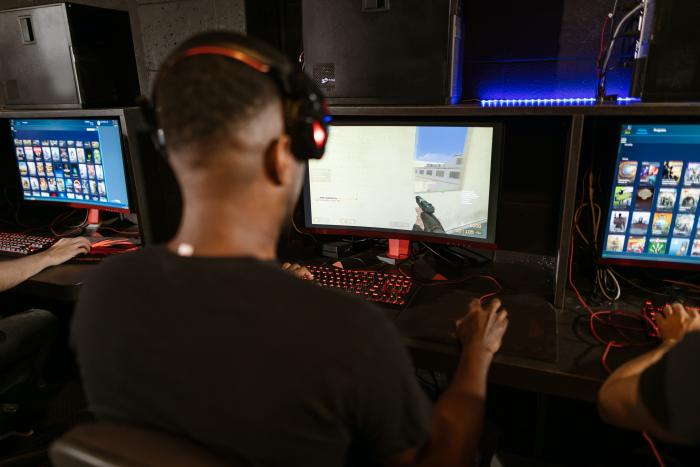How Counter-Strike Became a Cultural Landmark of Gaming
FTC Statement: Reviewers are frequently provided by the publisher/production company with a copy of the material being reviewed.The opinions published are solely those of the respective reviewers and may not reflect the opinions of CriticalBlast.com or its management.
As an Amazon Associate, we earn from qualifying purchases. (This is a legal requirement, as apparently some sites advertise for Amazon for free. Yes, that's sarcasm.)

When eSports are brought up, naturally, the lane games like Dota 2 and League of Legends are the first titles that come to mind. However, weighing in among them, and even surpassing the eSports titans in many regards, is Counter-Strike. Easily the most popular of the competitive first-person shooters, the franchise has been in circulation for over two decades, with Counter-Strike: Global Offensive now a centerpiece of the gaming world.
Not only is Counter-Strike a thrilling game, as shown by its tremendous player count, but it also makes for great viewing. Sitting only behind Grand Theft Auto V, League of Legends, Valorant, Minecraft, and Apex Legends in total hours of gaming watched on popular platform Twitch in September 2021, CS:GO boasted 61.3 million hours, 22.8 million of which were eSports hours. It’s become a cultural landmark in gaming, but how has it reached these heights?
Why Does Counter-Strike Resonate with Gamers?
Since Doom was released in 1993, first-person shooters have remained very popular in the realms of gaming, and competitive gaming, especially, although that success hasn't translated across to movies. Each year, the Call of Duty franchise and, less frequently, the Battlefield franchise sell millions of copies and surge to the top of the charts. Video games are also starting to move across to other platforms with an example being The Last of Us television series which is set to come out in 2022. This alone may offer a glimpse as to why Counter-Strike, an FPS geared towards competition, is so popular, but it doesn’t tell the whole story.
What underpins Counter-Strike as a leading eSports title is its community, which has helped the game from its initial release develop into a titan of competitive play. Through community feedback, each update and new release has been refined to deliver an experience that gamers enjoy. Furthermore, the range of options within the game lends it to gamer discussion, with tactics and set-ups in each playthrough being crucial to success, as do the team-based modes. Fuelling this is how absurdly realistic the game is, a feature that players laud endlessly.
While the gameplay and objectives are inherently simple, as almost all FPS titles are, CS:GO has a particularly engaging learning curve thanks to the need to buy weapons each round with the performance-based virtual currency earned. This way, players need to play economically, and yet, there’s yet another tier to the learning curve. The game regularly updates, swinging the meta to force players to adapt while also adding new skins for weapons, which players can openly gamble and sell for real money online.
The Many Iterations of Counter-Strike
Most who are new to the game or fairly new to the eSports scene will see CS:GO as the sole product, but the franchise has been around since 1999, producing several versions and titles. The first iteration, Counter-Strike, began as a mod of Half-Life, utilizing the map customization feature to craft five betas for the new game before, in 2000, it was picked up by Valve and launched as a standalone game.
As it was tweaked and updated through to version 1.6, the franchise then attempted a single-player campaign with Counter-Strike: Condition Zero in 2004, but it didn’t go down well. That same year, the team released another new title more akin to the original, Counter-Strike: Source, which was far more favorably reviewed. Still, a chunk of the base reverted back to 1.6 as Source was initially seen as being too accessible, though most eventually got on board with Source.
Players had to wait eight years for the next mainline game, with that being the titanic CS:GO.
Competition Powered Counter-Strike to the Upper-echelons
The realistic gameplay, balanced mechanics, and lack of pay-to-win have all allowed Counter-Strike, particularly CS:GO, to remain an ever-competitive title, which earns it adoration from gamers. With skill determining the outcome of games, Counter-Strike has been able to live up to its reputation of being both an exciting watch and a game that needs mastering in order for players to find success.
Its legitimacy has allowed the FPS to muscle in amongst the other balanced, skill-based titles like League of Legends and Dota 2, enabling third parties to also respect it as a fair sport. This is why there are outright betting platforms for the CS:GO calendar alongside those for other eSports. When the competitions get underway, more niche betting markets will likely appear to support the insatiable interest from sports bettors and fans who follow the tournament minute by minute.
Such a wide-spanning acceptance of it as a top-class eSport has helped CS:GO to host over 5,900 tournaments, to date, and award the second-highest count of prize money of all competitive games at $122 million. Through 2021, its player base has also remained incredibly strong, averaging over 740,000 players through the winter, and over 500,000 in July, August, and September. People want to play at any level as, even below the peak showings in eSports contests, it’s still an incredibly competitive experience.
CS:GO has been in the business of competitive gaming almost since its inception, and it’s the developers’ commitment to updates and balanced play that makes it such an icon of eSports.


